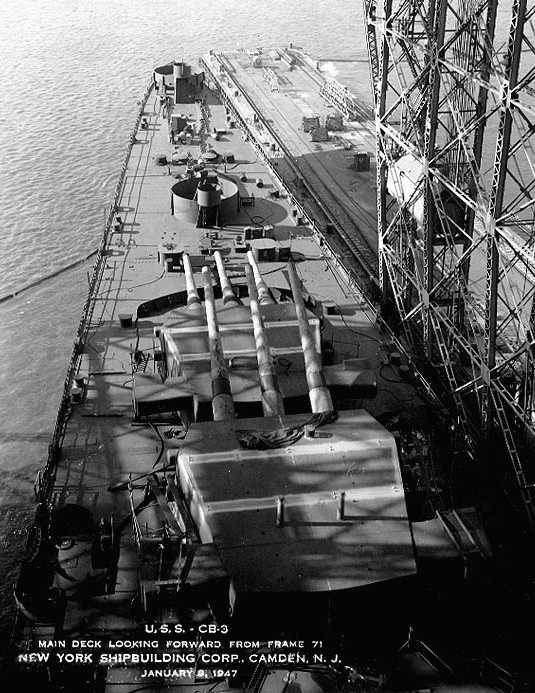|
The manufacturing of these guns shows the changes brought about by the massive production increases caused by World War II. While the 16"/45 (40.6 cm) guns and turrets for the battleship North Carolina and her sister were made almost entirely at the Naval Gun Factory in Washington D.C., the rapid acceleration in shipbuilding during the war forced the Navy to move much of the production of heavy guns to other manufacturers. As a result, the forgings for the 12"/50 (30.5 cm) Mark 8 guns were made by Midvale and Bethlehem Steel Corporations and then sent to the Naval Gun Factory for processing. The Watervliet Arsenal also worked on the guns until they were approximately 65 percent complete and then sent them back to the Naval Gun Factory where the guns were finished. The turrets for these ships were built at the Naval Gun Factory. Constructed of liner, jacket, three hoops, two locking rings and a screw box liner. The bore was chromium plated. Used a down-swinging hydraulically operated Welin breech. The first prototype gun was completed in January 1942. |

USS Guam CB-2 at Pearl Harbor in February
1945
|

Bow of unfinished USS Hawaii CB-3 in January
1947
|